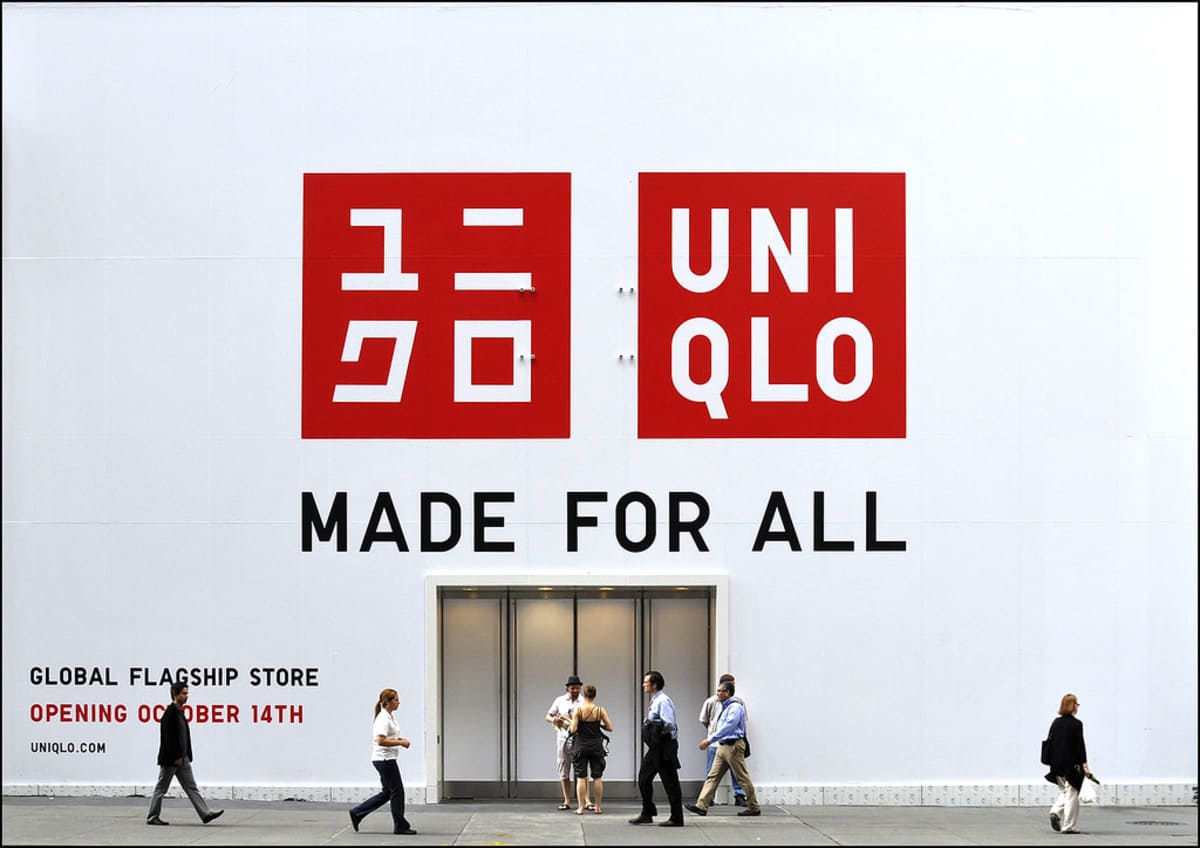When you delve into the history of Hollister, you'll discover it was launched in 2000 by Abercrombie & Fitch, aimed at capturing the spirit of youthful surf enthusiasts. The brand's relaxed California vibe quickly resonated with consumers, leading to a rapid expansion that saw over 500 stores opened by 2013, including locations worldwide. As the brand evolved, store designs transitioned from vintage beach shacks to more modern, accessible layouts, greatly enhancing the shopping experience. Despite encountering legal hurdles and public relations challenges, Hollister established itself as a key player in youth culture. As a fashion brand, it ignites discussions about community and controversy, adding to its allure. Stay tuned to learn more about its journey and influence in the fashion world.
Origins of Hollister

The origins of Hollister reveal a captivating blend of creativity and marketing savvy. Launched by Abercrombie & Fitch in 2000, the brand's first store opened in Columbus, Ohio, catering to a youthful audience keen for surf clothing. The fictional backstory crafted for Hollister revolves around a supposed founder, John M. Hollister, who allegedly emigrated to the Dutch East Indies in 1922. Notably, this narrative lacks any historical basis, yet it helped shape the brand's identity.
Abercrombie & Fitch chose the name "Hollister" arbitrarily, with no real connection to the actual town in California. This clever marketing decision played a vital role in the brand's appeal, evoking an image of laid-back California vibes. As Hollister's popularity soared, the brand experienced remarkable expansion, boasting 587 stores worldwide by 2013 and generating over $2 billion in sales. This impressive growth not only showcased the effectiveness of Abercrombie & Fitch's strategy but also solidified Hollister's global recognition. Through a mix of imaginative storytelling and savvy branding, Hollister carved out a niche in the competitive fashion landscape, attracting fans who resonate with its vibrant lifestyle.
International Expansion
Expanding its horizons, Hollister Co. made a bold move into international markets, starting in January 2006 with its first store in Toronto, Canada. This initial step set the stage for a rapid international expansion that showcased the brand's appeal beyond North America. Just two years later, on October 25, 2008, Hollister opened its first store outside North America in Brent Cross, London, marking a significant milestone in its global journey.
Following the success in the UK, additional stores quickly opened in December 2008, including locations in Westfield London and Bluewater shopping centre. By 2013, Hollister had further expanded its reach to various countries, including Italy, Germany, China, Japan, and Spain, amassing a total of 587 stores worldwide.
The brand's growth didn't stop there. In 2011, Hollister marked its presence in Europe with the opening of its first Irish store at Dundrum Town Centre in Dublin. This strategic international expansion not only solidified Hollister's global brand presence but also allowed it to connect with diverse markets, making it a recognizable name across continents.
Store Design Evolution

As Hollister Co. spread its wings internationally, the brand simultaneously reimagined its store designs to keep pace with evolving consumer preferences. Initially inspired by vintage beach shacks, the original store design embraced a laidback atmosphere with shuttered windows and brown patterned walls. However, as trends shifted, Hollister recognized the need for a strategic branding shift.
New store designs moved away from the beach shack aesthetic, incorporating front windows and larger merchandise areas to enhance customer accessibility. The first flagship store, which opened on July 16, 2009, in SoHo, New York, spanned an impressive 40,000 square feet and embodied the laidback Southern California lifestyle while adapting to contemporary consumer preferences.
Renovations played a significant role in this evolution, focusing on creating a more customer-friendly environment. Improvements in lighting made the stores more inviting, while reducing the music volume guaranteed shoppers could engage comfortably with the merchandise. Overall, Hollister's commitment to evolving its store design reflects a keen awareness of its audience, making each visit a more enjoyable experience. With these thoughtful changes, Hollister continues to resonate with customers around the globe.
Legal Challenges
While maneuvering through the complexities of the retail world, Hollister Co. has encountered a variety of legal challenges that have tested its brand integrity and cultural sensitivity. From trademark disputes to discrimination cases, these issues highlight the significance of compliance in the retail industry.
| Legal Challenge | Description | Year |
|---|---|---|
| Trademark Conflict | Legal threats against local merchants using the name "Hollister" | Ongoing |
| Refund Lawsuit | Settlement regarding customer identification processes | 2007 |
| Discrimination Case | Hijab-wearing employee denied work in California | Ongoing |
| Accessibility Lawsuit | Violations of ADA regulations in Colorado stores | 2011 |
| Compliance Ruling | 248 out of 483 stores found in violation of ADA standards | 2013 |
The lawsuit against Abercrombie & Fitch regarding discrimination and the accessibility issues spotlight how Hollister must navigate legal waters carefully. As the brand evolves, addressing these legal challenges will be essential for maintaining its reputation and ensuring a welcoming environment for all customers.
Public Relations Issues

Public relations issues have often put Hollister Co. in the spotlight, revealing both the brand's vulnerabilities and the necessity for cultural sensitivity. In 2005, Hollister faced legal action due to unauthorized knockoffs of Robb Havassy surfboards used for store decoration, which led to undisclosed damages. Fast forward to 2010, when an employee's refusal to wear a Red Poppy on Armistice Day prompted a reevaluation of company policies, illustrating the need for awareness around cultural symbols.
Things took a turn in 2012 during a store opening in South Korea, where racially insensitive modeling sparked significant public backlash, forcing the termination of the models involved. Then, in 2013, a breastfeeding incident in a Houston store led to a nationwide nurse-in protest, further highlighting ongoing cultural sensitivity issues.
These events have fueled protests against Abercrombie & Fitch's employee dress code policies and cultural insensitivity, ultimately impacting Hollister's brand image. As social media amplifies these concerns, it's clear that maintaining a positive public perception requires a commitment to understanding and addressing cultural sensitivities.
Brand Positioning Strategies
Hollister Co. effectively positions itself as a leader in youth culture and casual lifestyle branding by tapping into the aspirations of teenagers and young adults. Operating under the Abercrombie & Fitch umbrella, Hollister emphasizes a laid-back, Southern California vibe, which is evident in its store designs and marketing tactics that promote a surf and sun aesthetic.
To differentiate itself from competitors, Hollister creates a sense of exclusivity, often concealing its store interiors from outside view. This strategy enhances the allure of the shopping experience, inviting curiosity and engagement. Pricing also plays a significant role; with hoodies priced at $44.95, Hollister products are marketed as premium, attracting consumers who are willing to pay more for a strong brand identity compared to alternatives like Hanes.
The brand's effective marketing tactics, including digital promotions and lifestyle branding, have contributed to impressive sales figures, generating over $2 billion by 2013. By consistently aligning its offerings with the desires of its target demographic, Hollister maintains its status as a prominent lifestyle brand that resonates deeply within youth culture, making it a go-to choice for casual surf clothing.
Community Impact

As a brand that thrives on youth culture, Hollister Co. also has deep ties to its namesake town, Hollister, California. The community faces economic challenges, especially with recent local business closures, sparking discussions about development and support. With a population of around 36,000, mainly Latino, many locals work in agriculture, reflecting the town's rural roots.
The annual biker rally, commemorating the 1947 Hollister riot, serves as a cultural touchstone, engaging residents and celebrating the town's heritage. Although Hollister lacks a mall and isn't a tourist hub, community events like this foster unity and pride.
Here's a glimpse of Hollister's community impact:
| Aspect | Details |
|---|---|
| Population | Approximately 36,000, mainly Latino |
| Recent Developments | New businesses, like Walgreens, boost morale |
| Key Events | Annual biker rally reflects local heritage |
As Hollister works towards economic recovery, these events and local businesses play a crucial role in nurturing community bonds and ensuring a brighter future for its residents.
Cultural Controversies
Cultural controversies have often shadowed Hollister Co., making it clear that the brand's connection to youth culture doesn't always translate into positive community relations. In 2010, Hollister faced backlash when an employee was reprimanded for refusing to wear a Red Poppy on Armistice Day, leading to a reevaluation of their dress code policies.
The issue escalated in 2012 when a store opening in South Korea featured racially insensitive modeling, prompting the termination of the models involved after public outcry. In 2013, a breastfeeding incident in a Houston store ignited a nationwide nurse-in protest, spotlighting critical breastfeeding rights.
Further complicating its reputation, Hollister attracted legal action for using unauthorized knockoffs of Robb Havassy surfboards, raising ethical concerns around cultural appropriation. Critics have also targeted the brand for promoting a narrow beauty standard through its advertising campaigns, which mainly feature extremely thin models. This has spurred ongoing debates about body image and representation in fashion, leaving many to question Hollister's commitment to inclusivity and sensitivity within its marketing strategies.
Frequently Asked Questions
What Is the History of Hollister?
You might find it fascinating that Hollister Co. started in 2000, aiming to capture a relaxed California vibe. Despite a fictional backstory, the brand quickly grew, boasting over 587 stores and significant sales by 2013.
What Company Owns Hollister?
Hollister's owned by Abercrombie & Fitch Co., a company known for its trendy lifestyle brands. If you love casual apparel, you'll find that Hollister's stylish offerings perfectly align with Abercrombie's youthful aesthetic.
Who Is the Old Owner of Hollister?
You might find it interesting that Hollister doesn't have an "old owner" in the traditional sense. It was created by Abercrombie & Fitch, which still owns the brand today, shaping its identity and marketing.
What Is the Story of Hollister California?
Hollister, California, boasts a rich history, starting as a simple country store founded by T.S. Hawkins. Over time, it evolved into a vibrant community known for its agricultural roots and unique biker culture.





Thanks for sharing. I read many of your blog posts, cool, your blog is very good.
Loooking fo? projector dealers ?n Hyderabad? Nissi Office Systems ?ffers a wide range of ?igh-quality
projectors ?nd accessories.
At https://fansly.com/XArtStudio, my followers enjoy a mix of professional digital art and creative flair. I showcase how an image can evolve through styles like Acry-Real or Glamour, ending with a canvas preview that places the artwork in real-world context. It’s an artistic journey designed to inspire and impress at every stage.
Every photo holds potential to be something more, and at https://fansly.com/XArtStudio, I showcase that transformation. I take ordinary images and reimagine them as vibrant digital paintings, whether realistic or glamour-inspired. My Fansly page is where I post these exclusive creations along with previews of how they’d look as framed art in your space.
I’ve always believed that digital art can capture emotions just as deeply as traditional paintings, and that’s exactly what I share on my page. From highly realistic portraits to more glamorous, stylized creations, each piece is carefully designed to stand out. If you love transformations, my gallery will inspire you – https://fansly.com/XArtStudio.
My Fansly gallery at https://fansly.com/XArtStudio offers something different: a full transformation experience. From raw photos to polished digital paintings, my styles include Acry-Real for lifelike detail and Glamour for dramatic flair. Each post also features previews showing the artwork in real-world canvas displays, giving it an added layer of immersion.
Art should always make you stop and look twice, and that’s what I aim for with my Fansly gallery. You can find it at https://fansly.com/XArtStudio, where I share exclusive digital portraits created from real photos. The transformations include realistic and glamour finishes, along with previews of how the work might look framed on a wall.